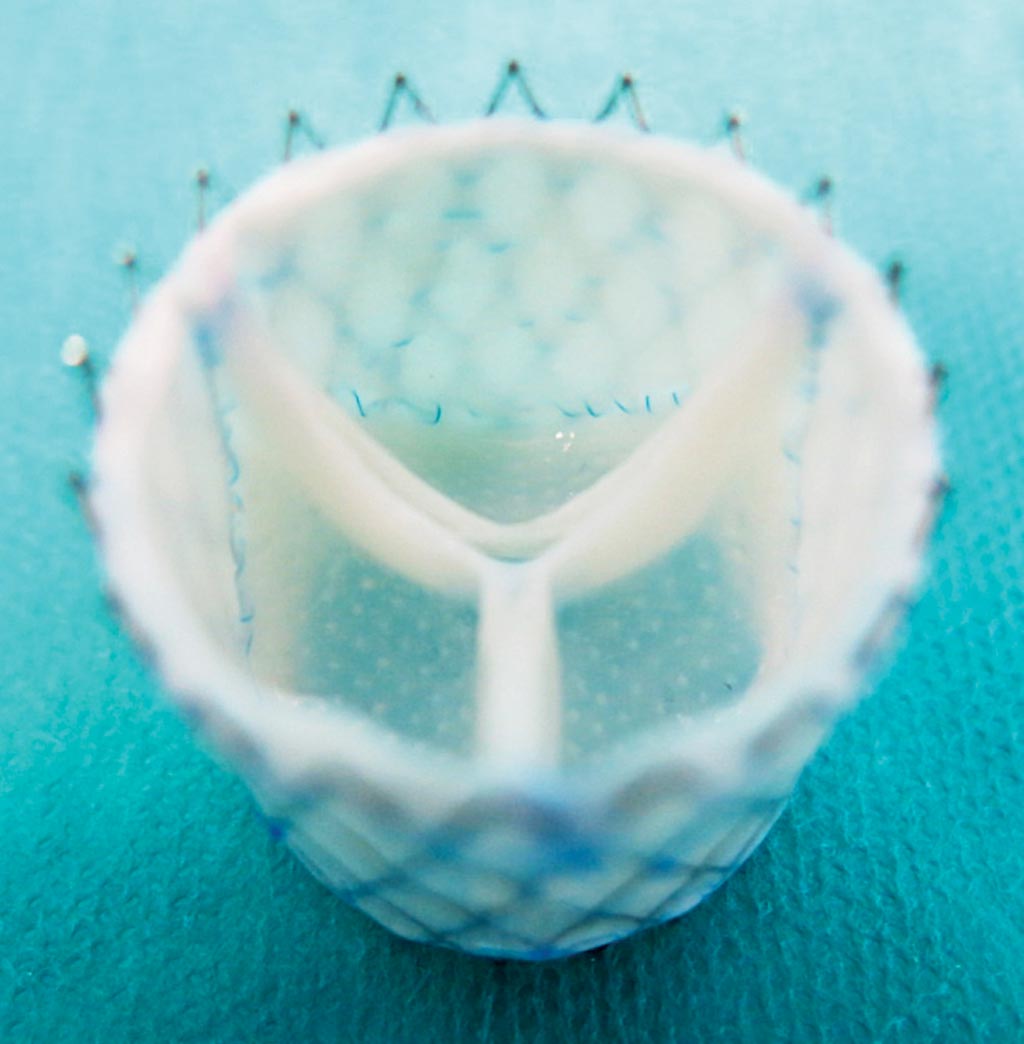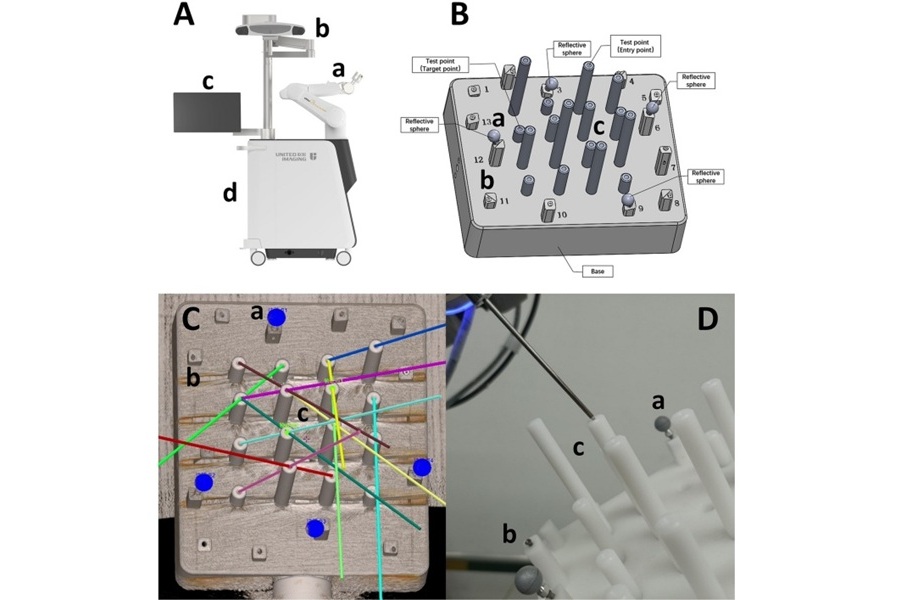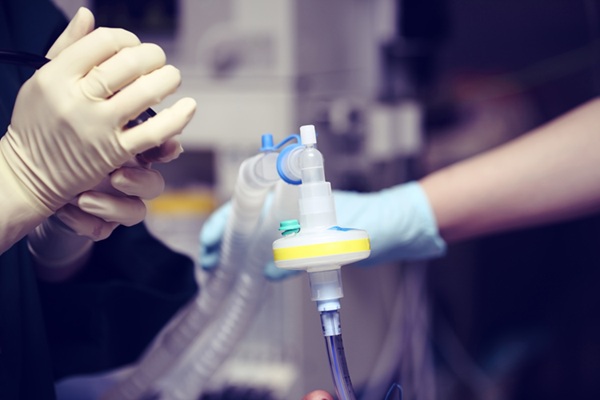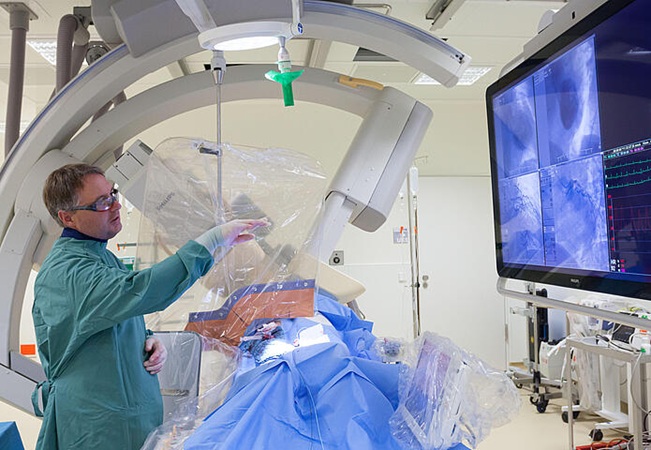Bioengineered Heart Valves Guide Tissue Remodeling
|
By HospiMedica International staff writers Posted on 21 May 2018 |

Image: A computer-designed customized regenerative heart valve (Photo courtesy of UZH).
A new study suggests that tissue-engineered heart valve (TEHVs) designed with the aid of computer simulations could provide long-term functionality.
Researchers at the University of Zurich (UZH; Switzerland), Eindhoven University of Technology (TUE; The Netherlands), and other institutions used computational modeling to design regenerative TEHVs grown on polymer scaffolds seeded with vascular cells. After four weeks in a bioreactor, the grafts were decellularized prior to implantation as pulmonary valve replacements in sheep, using a minimally invasive transcatheter technique. The TEHVs were then monitored for one year using multi-modal in-vivo imaging and comprehensive tissue remodeling assessments.
At follow-up, 9 of the 11 grafts remained functional. Computational modeling predicted that the valve leaflets would shorten during dynamic remodeling before reaching equilibrium, which was confirmed in the sheep. The computer simulation also showed that TEHV failure could be predicted in advance for non-physiological pressure loading. The researchers suggest that future tissue engineering strategies should include computational simulation so as to lead to more predictable clinical translation. The study was published on May 9, 2018, in Science Translational Medicine.
“One of the biggest challenges for complex implants such as heart valves is that each patient's potential for regeneration is different. There is therefore no one-size-fits-all solution,” said senior author Professor Simon Hoerstrup, MD, PhD, of UZH. “Thanks to the simulations, we can optimize the design and composition of the regenerative heart valves and develop customized implants for use in therapy.”
Surgical correction of chronic heart disease (CHD) defects such as Tetralogy of Fallot and pulmonary atresia has increased dramatically. But despite excellent long-term survival, they typically require multiple operative procedures until adulthood, as the homograft pulmonary artery conduits or BJV grafts have no ability to grow and remodel with the somatic growth of the child. Additionally, an intense inflammatory reaction to these materials commonly occurs, resulting in early calcification and failure, leading typically to the need for 5-7 operative procedures.
Related Links:
University of Zurich
Eindhoven University of Technology
Researchers at the University of Zurich (UZH; Switzerland), Eindhoven University of Technology (TUE; The Netherlands), and other institutions used computational modeling to design regenerative TEHVs grown on polymer scaffolds seeded with vascular cells. After four weeks in a bioreactor, the grafts were decellularized prior to implantation as pulmonary valve replacements in sheep, using a minimally invasive transcatheter technique. The TEHVs were then monitored for one year using multi-modal in-vivo imaging and comprehensive tissue remodeling assessments.
At follow-up, 9 of the 11 grafts remained functional. Computational modeling predicted that the valve leaflets would shorten during dynamic remodeling before reaching equilibrium, which was confirmed in the sheep. The computer simulation also showed that TEHV failure could be predicted in advance for non-physiological pressure loading. The researchers suggest that future tissue engineering strategies should include computational simulation so as to lead to more predictable clinical translation. The study was published on May 9, 2018, in Science Translational Medicine.
“One of the biggest challenges for complex implants such as heart valves is that each patient's potential for regeneration is different. There is therefore no one-size-fits-all solution,” said senior author Professor Simon Hoerstrup, MD, PhD, of UZH. “Thanks to the simulations, we can optimize the design and composition of the regenerative heart valves and develop customized implants for use in therapy.”
Surgical correction of chronic heart disease (CHD) defects such as Tetralogy of Fallot and pulmonary atresia has increased dramatically. But despite excellent long-term survival, they typically require multiple operative procedures until adulthood, as the homograft pulmonary artery conduits or BJV grafts have no ability to grow and remodel with the somatic growth of the child. Additionally, an intense inflammatory reaction to these materials commonly occurs, resulting in early calcification and failure, leading typically to the need for 5-7 operative procedures.
Related Links:
University of Zurich
Eindhoven University of Technology
Channels
Surgical Techniques
view channelAblation Reduces Stroke Risk Associated with Atrial Fibrillation
Atrial fibrillation (AFib) greatly increases the risk of stroke, blood clots, heart failure, and death, and millions of people in the U.S. are expected to be affected in the coming years.... Read more
Optical Tracking Method Identifies Target Areas in Robot-Assisted Neurosurgery
Epilepsy occurs when nerve cells misfire and produce uncontrolled electrical bursts in the brain, leading to seizures. While most patients respond to medication, about 30% require more advanced intervention.... Read morePatient Care
view channel
Revolutionary Automatic IV-Line Flushing Device to Enhance Infusion Care
More than 80% of in-hospital patients receive intravenous (IV) therapy. Every dose of IV medicine delivered in a small volume (<250 mL) infusion bag should be followed by subsequent flushing to ensure... Read more
VR Training Tool Combats Contamination of Portable Medical Equipment
Healthcare-associated infections (HAIs) impact one in every 31 patients, cause nearly 100,000 deaths each year, and cost USD 28.4 billion in direct medical expenses. Notably, up to 75% of these infections... Read more
Portable Biosensor Platform to Reduce Hospital-Acquired Infections
Approximately 4 million patients in the European Union acquire healthcare-associated infections (HAIs) or nosocomial infections each year, with around 37,000 deaths directly resulting from these infections,... Read moreFirst-Of-Its-Kind Portable Germicidal Light Technology Disinfects High-Touch Clinical Surfaces in Seconds
Reducing healthcare-acquired infections (HAIs) remains a pressing issue within global healthcare systems. In the United States alone, 1.7 million patients contract HAIs annually, leading to approximately... Read moreHealth IT
view channel
Printable Molecule-Selective Nanoparticles Enable Mass Production of Wearable Biosensors
The future of medicine is likely to focus on the personalization of healthcare—understanding exactly what an individual requires and delivering the appropriate combination of nutrients, metabolites, and... Read moreBusiness
view channel
Philips and Masimo Partner to Advance Patient Monitoring Measurement Technologies
Royal Philips (Amsterdam, Netherlands) and Masimo (Irvine, California, USA) have renewed their multi-year strategic collaboration, combining Philips’ expertise in patient monitoring with Masimo’s noninvasive... Read more
B. Braun Acquires Digital Microsurgery Company True Digital Surgery
The high-end microsurgery market in neurosurgery, spine, and ENT is undergoing a significant transformation. Traditional analog microscopes are giving way to digital exoscopes, which provide improved visualization,... Read more
CMEF 2025 to Promote Holistic and High-Quality Development of Medical and Health Industry
The 92nd China International Medical Equipment Fair (CMEF 2025) Autumn Exhibition is scheduled to be held from September 26 to 29 at the China Import and Export Fair Complex (Canton Fair Complex) in Guangzhou.... Read more














